Machine Embroidery Needles Tips & Tricks You Probably Don’t Know
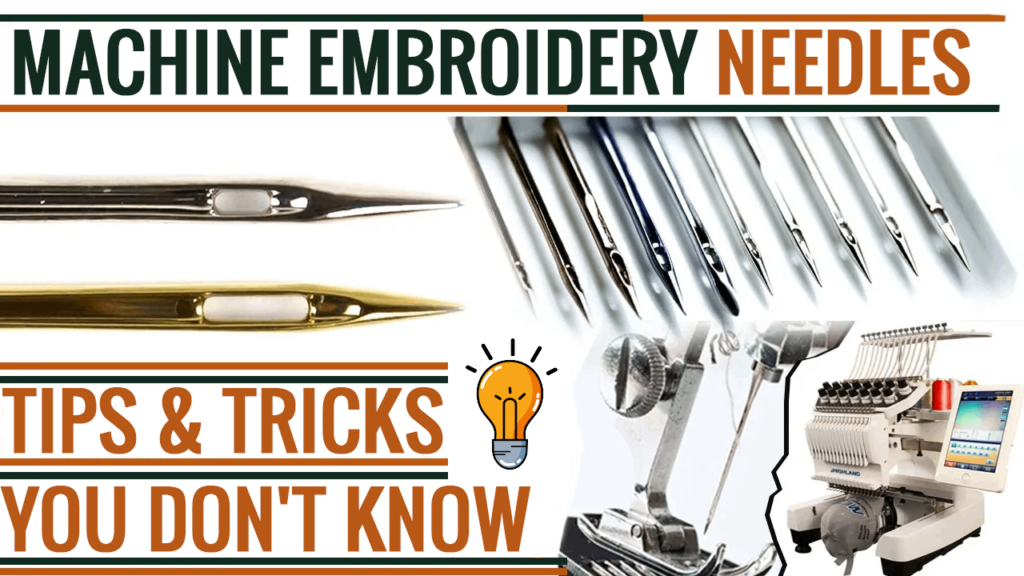
Machine Embroidery Needles Tips & Tricks You Probably Don't Know
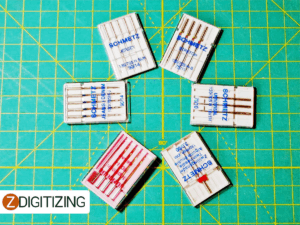
Embellishing cloth stretches back thousands of years and has undergone several transformations, but one feature of embroidery has remained virtually unaltered with time. Beautiful, complicated-looking effects are achieved with ease.
With today’s machine embroidery techniques, it’s easier than you think to add art to cloth with little more than a needle and some thread. I’ve worked on a variety of needlework projects throughout the years. For me, machine embroidery is preferable to hand stitching because it allows me to swiftly and efficiently bring beauty and individuality to any product.
Today’s article we will go through the many kinds, sizes, and applications of machine embroidery needles. Come on, let’s do this!
To know about embroidery, you can visit blogs on our website zdigitizing.com.
What Needles To Use For An Embroidery Machine?
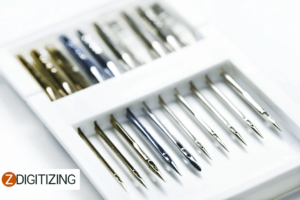
If you’re embroidering anything, knowing how to choose the proper needle type and size is critical to making sure your product turns out exactly how you envisioned it.
Even for experienced embroiderers, knowing everything there is to know about machine embroidery needles might be intimidating when just getting started.
Needles For Machine Embroidery Vs Needles For Universal Use:
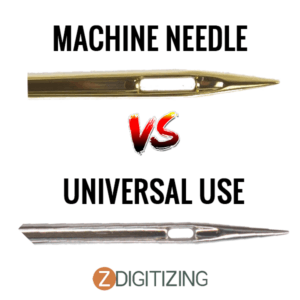
Specially designed machine embroidery needles are available in a variety of shapes and sizes, some of which are mainly developed for embroidery. While machine embroidery needles and universal sewing needles have certain similarities, there are two critical distinctions between the two types of needles.
Both the scarf on the needle and the size of the needle’s eye are distinctive features.
The depression on the needle’s back goes from the eye up the shaft to form the scarf. The needle’s eye is the hole through which the thread passes. Another critical distinction is the price difference between embroidery needles and normal sewing needles. They’re both made to be gentler on your embroidery thread, which is much finer and more delicate than normal embroidery thread.
Embroidery Needle Types:
Machine Embroidery needles come in a variety of finishes, such as chrome-plated and titanium-coated.
Chrome-Plated Steel Needles:
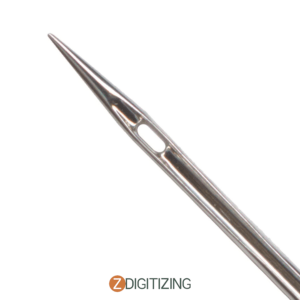
Needles made of chrome-plated steel are the most prevalent. Because chrome is the default needle material, your package will use chrome instead if you don’t specify it. Most sewing and embroidery tasks can benefit from their use.
Needles With A Titanium Plating:
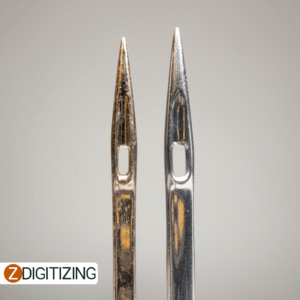
Titanium-plated needles are far superior to standard needles. In addition, they’re less likely to bend or break when your embroidery machine is sewing because they’re more substantial and more durable
In needlework, there are anti-glue needles, which are Teflon-coated embroidery needles. Use them if you have to stitch through fusing or work with sticky, self-adherent stabiliser materials.
Points Of A Needle:
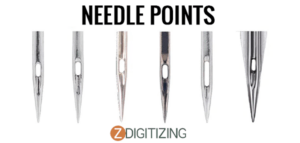
Based on the shape of their tips, machine embroidery needles may be divided into two fundamental types: sharp and ballpoint. The needle tip you use is determined by the cloth and thread you’re working with.
Sharp Tip:
This is the best tip for cutting through most things. To prevent the needle from separating from the fabric or material, this tool was created.
Ballpoint Tip:
Knits require a needle with a ballpoint tip that glides between the strands without causing a rip in the material. As a result, ballpoint embroidery needles are ideal for embroidering knit fabric. It should help prevent the fibres from breaking during the embroidery process, resulting in tiny holes or runs in the finished product.
Needle Sizes for Machine Embroidery:
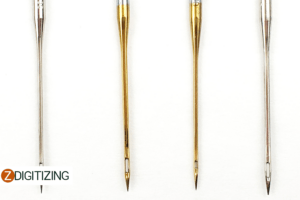
Yes, machine embroidery needles are available in many sizes, just as other types of sewing needles. Needle sizes refer to the width of the needle at the tip, not its length. Machine embroidery needles come in three sizes: 75/11, 80/12, and 90/14. (for home embroidery machines, not commercial or multi-needle machines).
In the case of woven and knit fabrics, the 75/11 size is best for lightweight, the 80/12 size is excellent for the medium weight (such as quilting cotton and linen), and the 90/14 size is best for embroidery on heavyweight fabrics (on jeans and felt, for example).
How to Pick The Best Needle For The Embroidery:
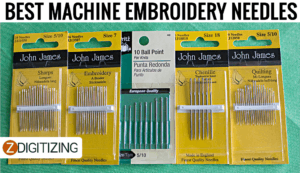
Machine embroidery needles come in a wide variety of styles and sizes. Even though it may appear overwhelming at first, there are so many possibilities because you need to use the correct needle for the work at hand.
A variety of elements must be taken into account when selecting an embroidery needle for a project. Still, when it comes down to it, the most important ones are the type of fabric, thread, and embroidery pattern you’re employing.
However, while universal needles may be used for embroidery, I strongly advise using specific machine embroidery needles for your embroidered projects since they are less likely to fray, snap, or break the embroidery thread than universal needles are.
If you like this informative article about Tips & Tricks for Using Machine Embroidery Needles, do like and share this video. If you have more information about embroidery work and digitising services, click the bell icon to get notified.
Do you Need a digitizing or vector art service for your embroidery or screen printing business,
With super fast turnaround and excellent quality? Just click the link and get a free quote in less than 5 minutes.
If you want digitized designs in multiple sizes with your embroidery machine file format, click the link.
Hope it will be helpful for you guys!
If there’s any question related to this article you can simply ask in the comment section and don’t forget to share with those you think might be helpful for them.
And finally, thanks for reading!












